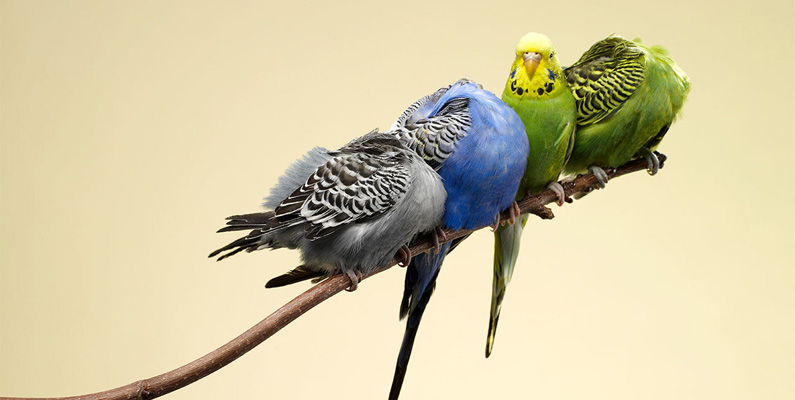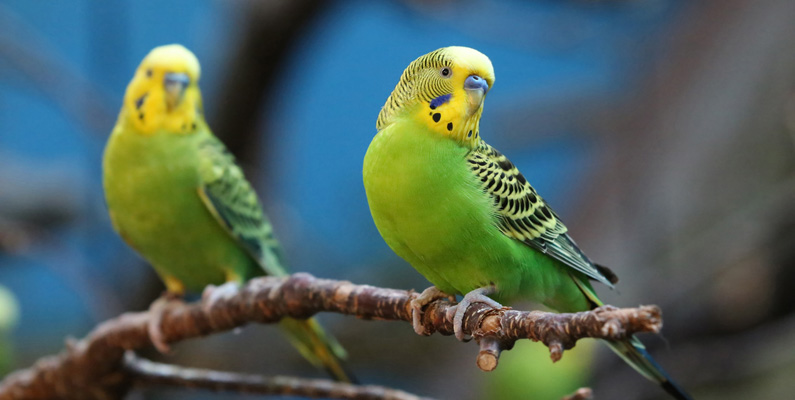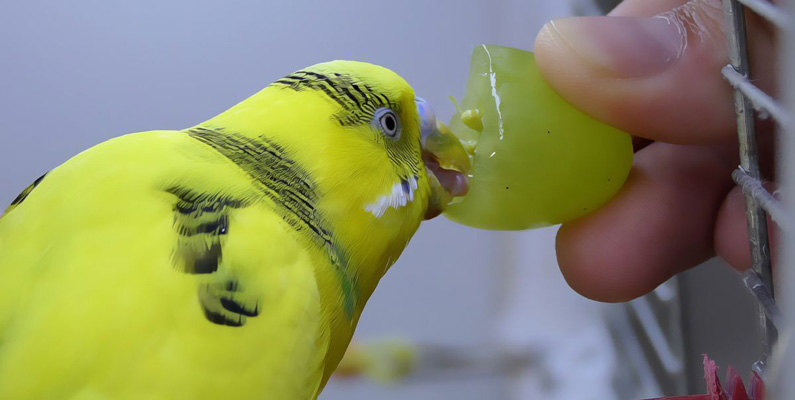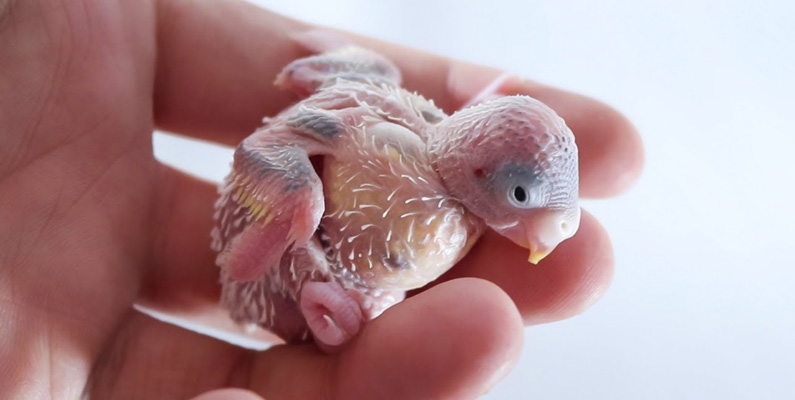The Budgerigar (Melopsittacus undulatus) is a small parrot and the only species in the Australian genus “Melopsittacus.” Budgerigars are social birds that primarily occur in small flocks but sometimes in very large flocks as well. They are a highly popular pet bird, especially in Sweden. Do you have one or more budgerigars at home? Or are you planning to get some? If so, you should read these ten points!
 Budgerigars are one of the smallest species of parrots…
Budgerigars are one of the smallest species of parrots…
Budgerigars are not the smallest birds within the parrot family, but they are still among the smallest. Most pet budgerigars typically grow to about 17-21 centimeters (6.7-8.3 inches) from the tip of the beak to the end of the tail. Their weight usually ranges around 30-40 grams . [source]
 They Can Generally Learn to Talk Better Than Many Larger Parrots…
They Can Generally Learn to Talk Better Than Many Larger Parrots…
There is no natural or scientific way to guarantee that a budgerigar—or any other type of parrot for that matter—will learn to mimic human sounds (or “talk,” as it’s also known). However, budgerigars have an ability to learn words quickly, and they can also enunciate more clearly than many other larger parrots, such as cockatoos and macaws. The most exciting aspect of their ability is that they can build a broader vocabulary than other parrots. They can also often use the words appropriately in context, which is quite remarkable for a small bird. [source]

 There Are Two Different Types of Budgerigars…
There Are Two Different Types of Budgerigars…
There are two distinct types of budgerigars; the English budgerigar, which is larger and specifically bred for the pet trade and exhibitions. Then there’s the wild budgerigar, native to Australia. Although both birds are budgerigars, they have obvious differences when seen side by side. The English budgerigar is typically about 2.5 to 5 centimeters (1-2 inches) longer than the traditional budgerigar. They also have puffier feathers around the face and generally a larger head. [source]
 Most Wild Budgerigars Are Green in Color…
Most Wild Budgerigars Are Green in Color…
It’s very common to see the species in various colors in pet stores. However, people tend to become accustomed to all the different colors, and many don’t realize that they are typically green or yellow, which is their natural color in the wild—mostly green. Other colors, such as blue or purple, have been bred by humans. [source]

 Their Diet Must Include More Than Just Seeds…
Their Diet Must Include More Than Just Seeds…
Due to their small size, budgerigars are easy to care for and relatively inexpensive to feed. However, contrary to popular belief, small birds like budgerigars should not be fed a diet consisting solely of seeds, as it can lead to serious health problems. Feeding your budgerigar a diet that includes fresh fruits and vegetables supplemented with pellets is ideal. It’s still good to include some seeds in your bird’s diet, as long as the fruits and leafy greens are available to provide essential nutrients to keep the bird healthy. [source]
 They Can See Ultraviolet Light…
They Can See Ultraviolet Light…
Like many birds, budgerigars have tetrachromatic color vision. Both humans and animals have receptors in our eyes called rods and cones. Rods allow us to see shapes, while cones allow us to see color. Birds, on the other hand, have the largest eyes relative to their body size, with no other animal on Earth having them as such. Budgerigars—and birds as a whole—have four types of cones in their eyes compared to humans, who only have three. This enables them to see ultraviolet light. This means that parrots, parakeets, doves, and finches we keep in captivity can actually see better than we can in terms of the color spectrum. [source]
 So Many Feathers on Such a Small Body…
So Many Feathers on Such a Small Body…
A fun (or trivial) piece of knowledge is that they have between 2,000 and 3,000 feathers on their tiny body. Similarly, their resting heart rate is between 350 and 550 beats per minute. This can be compared to an adult human’s resting heart rate, which is only between 55 and 80 beats per minute. [source]

 The Name Originates From There…
The Name Originates From There…
The name “budgerigar” comes from the patterning on its wings—a pattern that is undulated, or “shaped like waves,” in simple terms. The Kamilaroi people of Australia named the budgerigar “Betcherrygah,” which translates to “good food.” This led to the English name of the bird, “budgerigar,” which is a distortion of the original name. [source]
 Nests More Frequently in the Wild Than in Captivity…
Nests More Frequently in the Wild Than in Captivity…
In the wild, they breed multiple times a year if they have access to a suitable nesting site. However, pet budgerigars breed less frequently. Each clutch typically consists of 2 to 10 eggs on average. It’s not uncommon for some of the eggs to be infertile. The eggs are incubated for about 18 days before hatching. At hatching, the chicks weigh only about 2 grams. You can see a picture of a newly hatched budgerigar below. [source]

 Can Pose a Life-Threatening Risk if Budgerigars Lose More Than 20% of Their Blood…
Can Pose a Life-Threatening Risk if Budgerigars Lose More Than 20% of Their Blood…
A human can lose almost two liters of blood without much difference to us. It’s different for birds, where losing more than 20% of their blood can be life-threatening. For a budgerigar, this amounts to about 12 drops of blood. [source]

